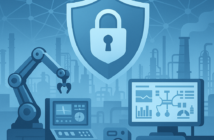wIn today’s increasingly digital world, ransomware has emerged as one of the most dangerous cybersecurity threats facing enterprises. With attacks on the rise and costs soaring into the millions per incident, businesses can no longer afford to be reactive. A proactive, strategic defense against ransomware is critical.
In this article, we will explore the best practices for ransomware protection, covering technical defenses, employee education, and disaster recovery planning, with insights from leading cybersecurity experts.
Understanding Ransomware: A Brief Overview
Ransomware is a type of malware that encrypts a victim’s data and demands a ransom for the decryption key. Common forms include:
- Crypto ransomware (encrypts files)
- Locker ransomware (locks out users from systems)
- Double extortion ransomware (data theft + encryption)
According to a Sophos 2023 report, 66% of organizations were hit by ransomware last year, and recovery costs averaged $1.82 million [1].
Given these sobering statistics, prevention and preparation are non-negotiable.
Best Practices for Ransomware Protection
1. Implement a Robust Backup Strategy
Backup is the last line of defense.
Enterprises must maintain regular, secure backups that are:
- Frequent: Daily or even hourly for critical data
- Redundant: Stored across multiple locations
- Immutable: Write-once, read-many (WORM) storage prevents tampering
- Offline: At least one copy should be completely disconnected (“air-gapped”)
The 3-2-1 backup rule — 3 copies of data, on 2 different media, with 1 stored offsite — remains the gold standard.
“Backups must be as isolated and tamper-proof as possible,” says CISA (Cybersecurity and Infrastructure Security Agency) [2].
2. Patch and Update Systems Regularly
Unpatched vulnerabilities are a top entry point for ransomware.
Regular software updates should cover:
- Operating systems
- Applications
- Firmware
- Networking devices (e.g., routers, firewalls)
Automated patch management tools can help enterprises streamline this process.
A glaring example: The infamous WannaCry ransomware spread rapidly in 2017, exploiting an unpatched Windows vulnerability (EternalBlue) [3].
3. Enforce Strong Identity and Access Management (IAM)
User accounts are often the weakest link. Best practices include:
- Multi-Factor Authentication (MFA): Reduces risk even if credentials are stolen
- Least Privilege Principle: Users only access data essential for their role
- Regular Access Reviews: Remove dormant or unnecessary accounts
In fact, MFA can block 99.9% of account compromise attacks, according to Microsoft [4].
4. Network Segmentation
Flat networks are a dream come true for ransomware attackers.
By segmenting networks, businesses can:
- Contain breaches within limited zones
- Protect sensitive systems separately
- Control lateral movement of threats
Critical areas like finance or R&D should have separate VLANs and stricter firewalls.
5. Email Filtering and Web Gateway Protection
Phishing remains a primary delivery mechanism for ransomware.
Protect your enterprise by:
- Deploying advanced email filters that scan for malicious attachments and links
- Training users to spot phishing attempts
- Blocking known malicious domains through secure web gateways
According to Verizon’s 2023 Data Breach Investigations Report, phishing was involved in 36% of all breaches [5].
6. Endpoint Detection and Response (EDR) Solutions
Traditional antivirus alone is no longer enough.
EDR tools offer:
- Real-time monitoring of endpoint activities
- Behavioral analysis to detect suspicious patterns
- Rapid isolation of infected devices
Gartner predicts that by 2026, 70% of organizations will consolidate EDR, XDR, and SIEM into a single platform for better threat management [6].
7. Zero Trust Architecture (ZTA)
The Zero Trust model assumes that threats could be both external and internal.
Key elements of Zero Trust include:
- Never trust, always verify authentication
- Micro-segmentation of networks and applications
- Continuous monitoring and validation of devices and users
The U.S. government has mandated federal agencies to move towards Zero Trust by 2024, signaling its critical importance [7].
8. Security Awareness and Training Programs
Employees are your first line of defense.
Ongoing cybersecurity training should cover:
- Recognizing phishing and social engineering tactics
- Safe internet browsing habits
- Proper reporting procedures for suspicious activities
Research shows security training can reduce employee phishing click rates by up to 70% [8].
9. Incident Response and Disaster Recovery Plans
Preparation is vital. Enterprises must:
- Develop detailed incident response (IR) playbooks
- Test IR plans through regular tabletop exercises
- Create disaster recovery (DR) strategies for quick restoration
- Engage cybersecurity insurance providers
A swift and coordinated response can minimize downtime, reputational damage, and financial losses.
10. Collaborate with External Cybersecurity Partners
Sometimes, external expertise is needed to bolster defenses.
Consider:
- Managed Detection and Response (MDR) services
- Penetration testing by third-party firms
- Threat intelligence feeds for proactive risk assessment
Working with cybersecurity vendors and public organizations like CERTs (Computer Emergency Response Teams) can help enterprises stay ahead of emerging threats.
Future Trends in Ransomware Protection
Emerging technologies are reshaping ransomware defense:
- AI/ML-based threat detection will offer more predictive capabilities
- Secure Access Service Edge (SASE) will unify security and networking
- Decentralized identity systems will enhance authentication security
Staying updated with trends will be critical for building future-proof security postures.
Conclusion
In the face of evolving ransomware threats, a layered, proactive defense is the best protection enterprises can have.
By implementing strong cybersecurity fundamentals — from backups and patching to Zero Trust and security training — businesses can significantly reduce their risk of falling victim to ransomware attacks.
The bottom line is clear: Ransomware is preventable with preparation, vigilance, and the right strategies.
References
<a name=”references”></a>
[1] Sophos, “The State of Ransomware 2023,” Link
[2] CISA, “Ransomware Protection Best Practices,” Link
[3] Europol, “WannaCry Ransomware Attack,” Link
[4] Microsoft, “MFA Prevents 99.9% of Account Hacks,” Link
[5] Verizon, “Data Breach Investigations Report 2023,” Link
[6] Gartner, “The Future of EDR and XDR,” Link
[7] U.S. Executive Order on Cybersecurity, “Zero Trust Architecture,” Link
[8] Proofpoint, “Human Factor Report 2023,” Link



